It takes a lot of work to maintain a traditional grass lawn or garden — all that mowing, dethatching, and watering adds up!
If you’re considering more low-maintenance (relatively!) and water-wise lawn alternatives, ground cover plants are the way to go.
These plants grow close to the ground and cover the area in lush, dense foliage. Compared to lawn grass, they typically need less water, mowing, or both — especially native plants.
Need to transform a flat space or corner? Give yourself a gorgeous, green garden (or lawn) with ground cover!
List of the Best Ground Cover Plants Australia
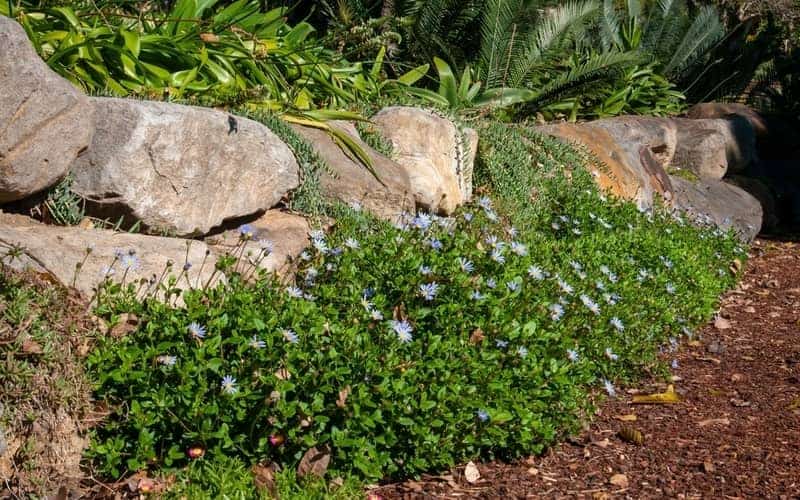
| HIGH TRAFFIC AREAS | MEDIUM TRAFFIC AREAS | LOW TRAFFIC AREAS |
|---|---|---|
| Blue flax lily | Creeping thyme | Casuarina ‘Cousin It’ |
| Mazus plants | Grevillea | Gardenia Radicans |
| Native lomandra | Irish moss | Hardenbergias |
| Silver Carpet | Kangaroo grass | Kidney Weed |
| Zoysia ‘Nara’ | White Star Creeper | Native Violet |
Why Choose Ground Cover Over Turf
Ground cover (or groundcover) is a catch-all term for plants that are low-growing and cover the ground. They help protect the soil, retain moisture, and even prevent erosion.
Lush, dense groundcover also helps suppress weeds and other invasive plants in a garden.
Grass is a very common type of ground cover, but it’s high-maintenance and costly over the long term. It’s also very water-intensive.
Ground cover plants have become popular as lawn alternatives, since they’re more water-wise and low-maintenance. They’re also better for people who want wild or no-mow lawns.
In particular, Australian native ground cover plants make perfect lawn substitutes! They’re well-suited to your local environment, with high tolerance for heat, drought, and poor soil nutrition.
There are downsides to using lawn alternatives, though. Many plants change appearance with the seasons, and may die back in cooler weather.
They’re also more expensive upfront, though maintenance will cost less in the long run.
Ground Cover Plants for High-Traffic Lawns
These groundcover plants can withstand being walked on, so they can grow in areas with moderate to high activity. For constant traffic, though, consider adding pavers or stepping stones!
However, keep in mind that for very heavy traffic (such as dog activity), lawn grass is still the better option.
Blue flax lily

Height: Up to 1.2m
Tolerance: Drought, frost, shade, salt
Best for: Borders, roundabouts, understory planting
Plants per square metre: 4–6
If you want some ground cover that benefits your local wildlife, go for Dianella longifolia, also called blue flax lily or blueberry lily.
This native Aussie grass has white or purple flowers in summer, which attract beneficial insects and birds. The small purple berries that follow are edible for both humans and animals!
(Double-check that you have an edible Dianella, though — other cultivars may be toxic.)
Dianella grasses are hardy — they can grow in some shade, most climates (except tropical), and poor soils. Don’t be afraid to cut back hard, as the plant will regrow from underground rhizomes.
Mazus plants
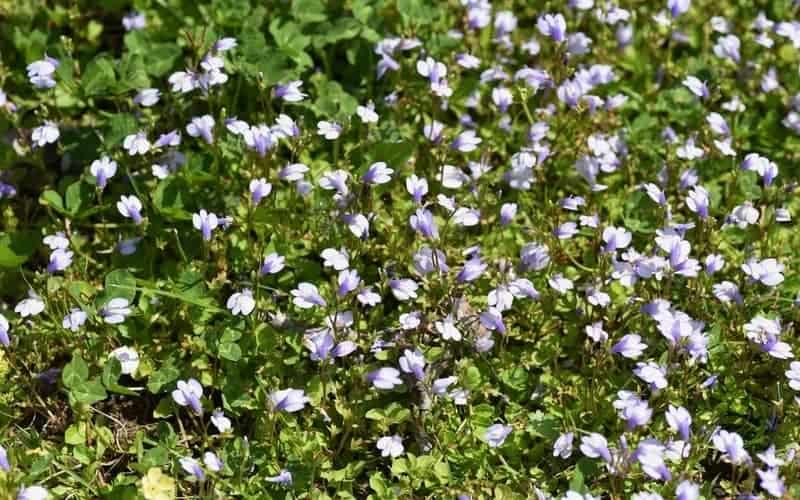
Height: Up to 0.15m
Tolerance: Damp soils, mild drought, shade
Best for: Borders, pathways, small lawns
Plants per square metre: 3–6
Create the perfect cottage-like garden with Mazus plants! In spring and summer, this dense, evergreen groundcover has small flowers in blue, purple, or white.
The rest of the year, you’ll have clusters of green leaves that create a lush carpet. Underneath, the plant puts out roots along its stems that latch onto the ground and help with erosion.
Mazus reptans is a popular cultivar of choice, but you can also look for the Australian native Mazus pumilio.
Water Mazus plants well during the establishment phase. It can withstand some drought, but prefers consistently moist, well-draining soil.
Native lomandra

Height: Up to 1m
Tolerance: Cold, drought, light shade
Best for: Wild lawns, shady spaces
Plants per square metre: 3–6
The native Lomandra longifolia is a grass of many names, including mat rush, basket grass, and chudweed! It’s also called spiny-head mat rush, likely due to the spikey flower heads and pointy leaves.
Native lomandra is an incredibly hardy groundcover for shade, though it also thrives in full sun. Its deep root system lets it withstand periods of drought and control ground erosion.
Mat rush is a warm-season grass, but it can tolerate cold temperatures down to -7ºC. However, it will need a warm summer to bounce back properly.
Native lomandra prefers consistently moist soil with good drainage. In spring, you’ll get sweet-scented cream flowers.
Silver Carpet
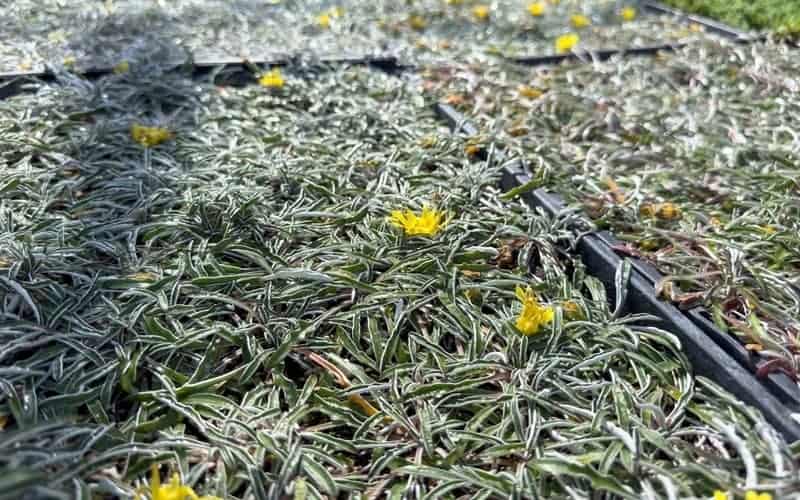
Height: Up to 0.05m (5cm)
Tolerance: Drought, heat, light shade
Best for: Front yards, paths, between pavers
Plants per square metre: 5–12
If you want to mimic a lawn with a more water-wise plant, Silver Carpet (Dymondia margaretae) is an excellent choice.
It’s very low-growing, usually reaching just 0.05m (5cm) in height. The slender silver-and-green leaves that “knit together” to form a dense mat. In summer, it can put out cheery yellow flowers.
Silver Carpet can withstand drought and heat, only needing supplemental watering during prolonged dry periods. It doesn’t do well in cold weather, though, and may struggle below 2ºC.
This ground cover prefers lots of sun, good drainage, and slightly alkaline soil.
Zoysia ‘Nara’
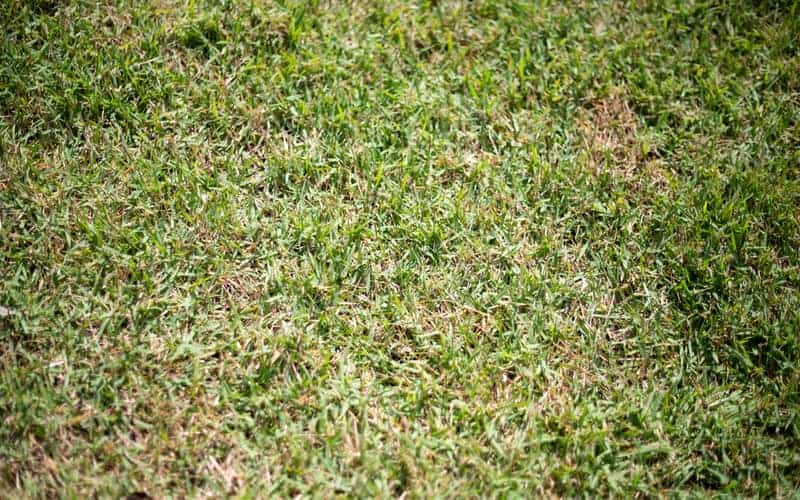
Height: Up to 0.05m (5cm) with mowing
Tolerance: Drought, heat, salt, shade
Best for: Large lawns, coastal gardens
Plants per square metre: Sold by sq.m. of turf
For high-traffic lawns and gardens (especially large areas), turf grass is usually still the best option. It withstands foot traffic and activity (such as dog walking) better than other types of ground cover.
Zoysia Nara™ is a native form of Zoysia macrantha. It can tolerate a wide range of conditions, including sandy soils, salt, and shade.
The leaves are fine and soft underfoot, but are very resistant to wear and tear. This grass is also less susceptible to pests and has good resistance to weeds or other invasive grasses.
Zoysia Nara™ is slow-growing and drought-tolerant, so it needs minimal maintenance. Mow the grass as necessary and water once a week during the growing season.
Ground Cover Plants for Medium-Traffic Lawns
These types of groundcover can tolerate a moderate amount of traffic — so you can step on them sometimes. However, they won’t hold up well under regular walking and activity.
Creeping thyme
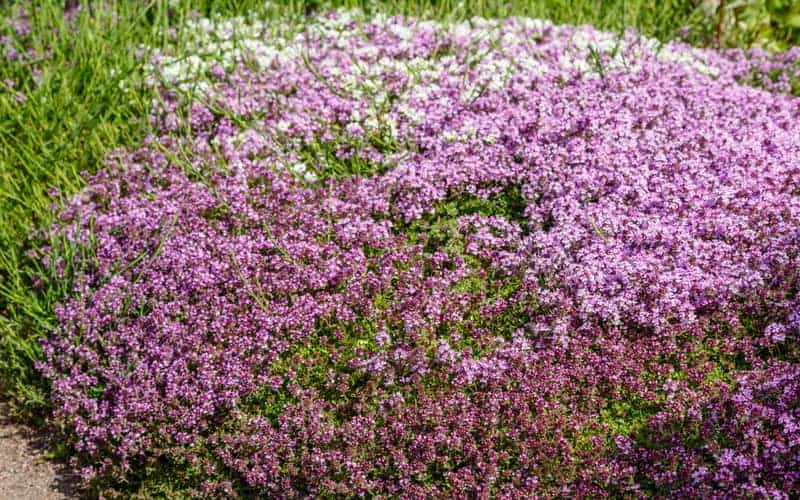
Height: Up to 0.07m (7cm)
Tolerance: Drought, light shade, poor soils
Best for: Paths, pavers, raised beds
Plants per square metre: 8–10
Get a delightful herby smell in your garden by covering it in creeping thyme! This fine-textured ground cover releases a delicious fragrance when stepped on or crushed.
Some varieties will flower between mid-spring and mid-autumn, such as White Creeping Thyme (Thymus serpyllum ‘Alba’) or Elfin Thyme (Thymus serpyllum ‘Elfin’).
Creeping thyme grows best in sandy, well-draining soils and lots of sunshine. It can withstand drought once established, and should be pruned after flowering to encourage new growth.
NOTE: Creeping thyme is indeed edible, but has inconsistent flavour compared to culinary varieties such as Thymus vulgaris.
Grevillea
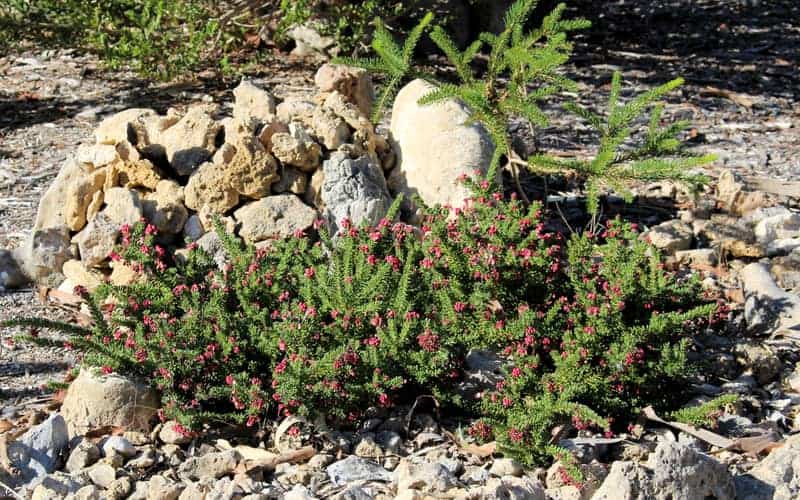
Height: Up to 0.5m
Tolerance: Drought, mild frost, light shade, poor soils
Best for: Along borders, retaining walls, slopes
Plants per square metre: Will depend on species/cultivar
From trees to shrubs to groundcover — grevilleas can do it all.
These native shrubs are popular for their hardiness and adaptability. They can tolerate most soils so long as there’s good drainage and enough sunlight.
When choosing grevillea ground covers, look for prostrate forms that naturally grow close to the soil. Some good options include Woolly Grevillea (Grevillea lanigera) and Grevillea ‘Bronze Rambler’.
Consult a nearby nursery or garden centre for local varieties that suit your climate and environment!
Irish moss
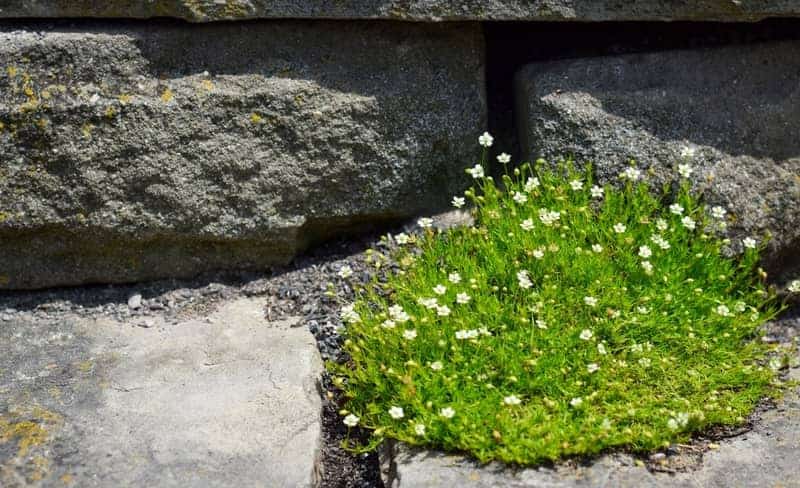
Height: Up to 0.05m (5cm)
Tolerance: Cold, damp soils, frost, mild drought, shade
Best for: Landscaping, pond areas
Plants per square metre: 6–12
Soft textures, vivid green colour, white star-like flowers — Irish Moss (Sagina subulata) can make any garden feel like a fairytale.
Despite the name, Irish Moss is not a type of moss, but an herbaceous perennial. Still, the ground cover looks like moss thanks to its very low growth habit and dense foliage.
Irish Moss thrives in cool, moist conditions, though it can withstand some dry periods. It’s sensitive to heat, however, so avoid growing it in dry climates that regularly go above 30ºC.
Get the best “lawn effect” by mowing lightly once a month during the growing season.
Kangaroo grass
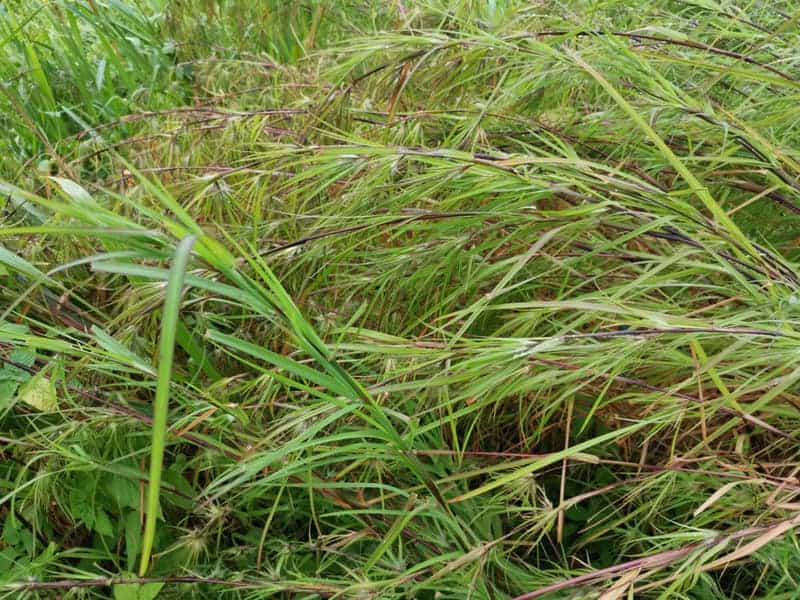
Height: Up to 0.9m
Tolerance: Drought, heat, light frost, poor soils, salt, shade
Best for: Landscaping, native gardens, rockeries
Plants per square metre: 1–3 (or 5g of seed)
You can find kangaroo grass (Themeda triandra) all over Australia, and for good reason. This hardy native grass will thrive just about anywhere, in all sorts of conditions.
Kangaroo grass can adapt to almost any soil, making it one of the best ground cover plants for clay soil. It can also grow in a wide range of pH levels (slightly acidic to moderately alkaline) with good drainage.
These native plants add colour, too — the tufted leaves are usually blue-green, before turning reddish-purple in winter. It also has rusty-red flowers in summer that turn bronze in autumn.
Source your kangaroo grass from a local nursery or garden centre! They’ll have plant stocks that are native to your region.
White Star Creeper
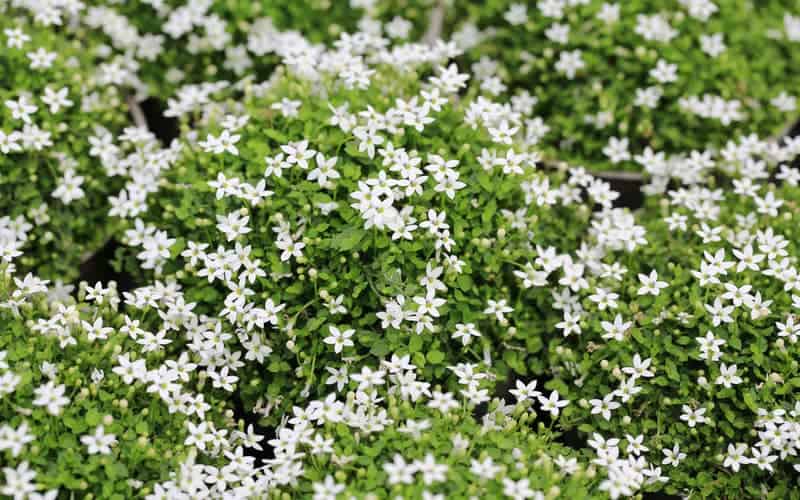
Height: Up to 0.1m
Tolerance: Cold, mild drought, moist soils, shade
Best for: Borders, paved areas, small yards
Plants per square metre: 5–9
It’s all in the name — White Star Creeper (Pratia pedunculata ‘White’) is a charming ground cover with delicate, star-shaped white flowers in spring and summer.
This fast-growing native is a great ornamental plant, especially when planted along an edge, border, or pathway. It can also fill spaces between pavers or within rockeries.
White Star Creeper is cold-hardy and does best in cool or temperate climates. It can tolerate some drought, but prefers moist soils and light shade.
NOTE: Pratia plants have recently been reclassified in the Lobelia genus, but are still commonly sold as Pratias! If you find a Lobelia pedunculata, that’s the same plant.
Ground Cover Plants for Low-Traffic Lawns
Due to their delicate foliage or flowers, these ground covers are best for areas with little to no foot traffic.
Grow them along fences or walls, or inside garden beds. Some are also good for covering shaded areas or swampy spots!
Casuarina ‘Cousin It’

Height: Up to 0.2m
Tolerance: Boggy soils, drought, frost, poor soils
Best for: Boggy areas, embankments, rockeries
Plants per square metre: 1
Casuarina glauca, or She-oak, naturally grows near brackish waterways! So if you need ground cover plants that like wet feet, look for the prostrate form, called Casuarina ‘Cousin It’!
The dense, thick foliage acts as a living mat that can prevent soil erosion and suppress weeds. The mound-like growth habit (like green mops!) also adds visual interest.
Casuarina ‘Cousin It’ can grow in cool to mild tropical climates. Moderate to heavy frost may cause the top layers to die back, but the plant regrows in spring.
Position ‘Cousin It’ somewhere with full sun, and prune only to maintain shape. Keep an eye out for pests, especially hairy brown caterpillars!
Gardenia Radicans
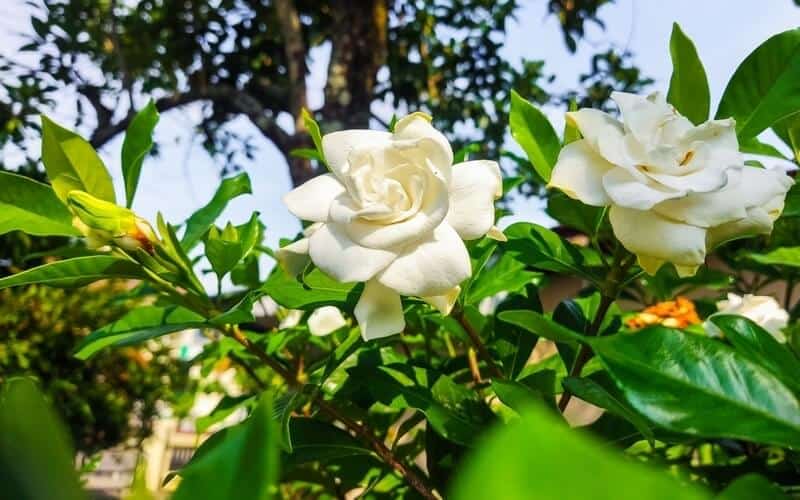
Height: Up to 0.6m
Tolerance: Acidic soils, humidity,
Best for: Borders, lining walkways, mass planting
Plants per square metre: 1–2
When it comes to tropical ground cover plants, check out the sweet-smelling Gardenia Radicans (Gardenia jasminoides ‘Radicans’)!
Also called Cape Jasmine, this is a low-growing form of the Gardenia jasminoides shrub. It loves to spread and hug the ground, covering it in glossy green leaves.
In late spring to early summer, Gardenia Radicans has fragrant white flowers that contrast nicely with the foliage.
Grow Gardenia Radicans in light or dappled shade and well-draining, acidic soil. It prefers humidity and doesn’t do well in harsh afternoon sun or cold climates.
Hardenbergias
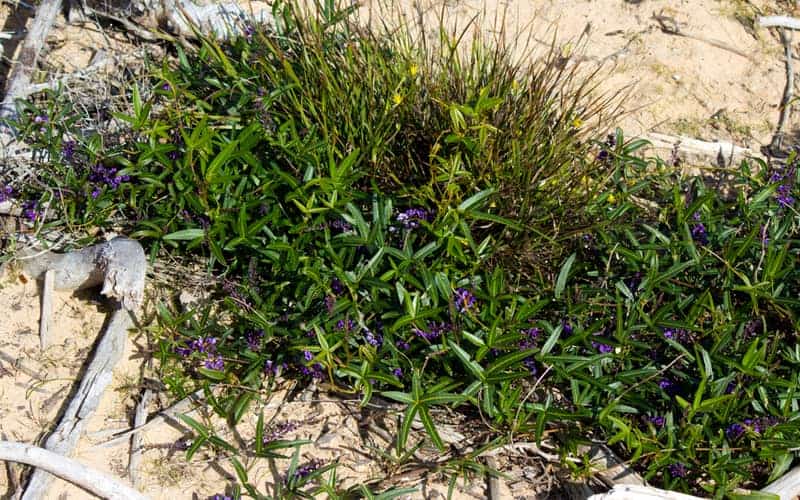
Height: Depends on pruning
Tolerance: Drought, light frost, poor soils
Best for: Borders, courtyards, garden beds
Plants per square metre: 1–3
For something more unique, consider creeping ground cover plants like Hardenbergias!
These fast-growing climbers can ramble and spread if grown close to the ground. Hardenbergia violacea is a popular species, with prostrate (low-growing) cultivars like ‘Sea of Purple’ or ‘Meema™’.
Hardenbergias have a dense growth habit and dark green foliage. In winter and spring, they put out masses of flowers — usually purple or white.
These plants can grow in most soils, so long as they have good drainage. Choose a cultivar suitable for your local climate and prune after flowering.
Kidney Weed

Height: Up to 0.3m
Tolerance: Drought, frost, moist soils, poor soils
Best for: Between pavers, in rock gardens
Plants per square metre: 4–9 (or 10g of seed)
Imagine a lush mat of green in your garden — that’s what you’ll get with the native Kidney Weed, or Dichondra repens.
Don’t let the name fool you, though, as it isn’t a weed! Dichondra repens is actually one of the best ground cover plants to prevent weeds, thanks to its dense, creeping growth habit.
Dichondra repens is best grown between stepping stones or pavers, or in rockeries. It’s more popular for the foliage than the tiny, yellow flowers that emerge year-round.
Kidney Weed won’t need much mowing except to control any spread. It prefers lots of sun and moist, well-draining soils, but will tolerate shade, frost, and dry periods.
Native violet

Height: Up to 0.4m
Tolerance: Cold, salt, shade
Best for: Borders, shady areas
Plants per square metre: 3–8
Native violets (Viola banksii) are excellent flowering ground cover plants, especially if you want colour in shady spaces!
These native flowers thrive in part to full shade, since too much sun makes the foliage less lush. They can tolerate moisture, coastal climates, and (for some cultivars) mild frost.
Native violets are generally low-maintenance, but need supplemental watering in hot or dry weather. In ideal conditions, they’ll flower throughout the year.
Be sure to get V. banksii cultivars, as other Viola varieties (like V. hederacea) have become weedy outside their native range.
Care Tips for Groundcover Plants
As with other plants, opt for groundcovers that are suited to your local climate and environment! Some factors to consider include humidity, soil type, sunshine levels, and weather.
Be sure to verify that your chosen ground cover isn’t invasive or weedy in your state.
Research proper care and maintenance so you keep your plants healthy and happy. Look up fertilising, pruning or mowing, and watering so the ground cover always looks its best.
Getting groundcover established takes time and effort, especially if you’re starting from scratch. Talk to a local gardening professional about how to set up your garden — and take care of it, too!
FAQs About Planting Ground Covers
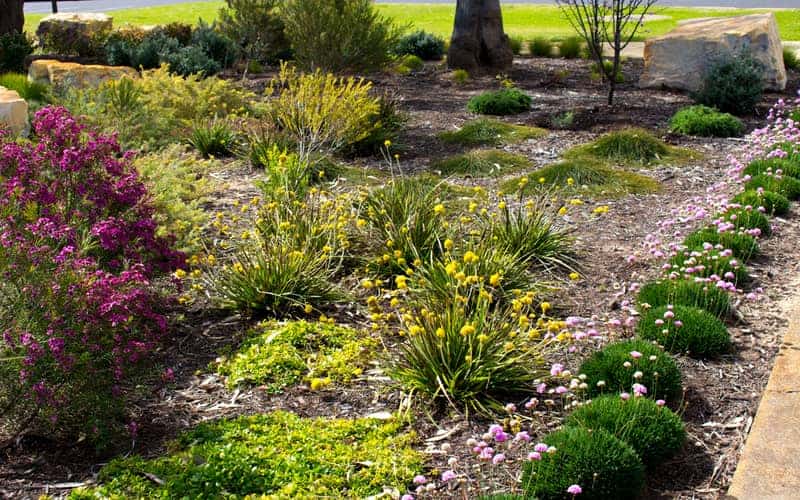
Here are some additional questions people often have about growing groundcover!
What is the best low-maintenance ground cover?
Many Australian natives are low-maintenance, since they’re drought-hardy and tolerate poor soils. That includes native violets, native lomandra, and Zoysia ‘Nara’.
For non-native plants, Silver Carpet and creeping thyme need minimal care.
What is the best ground cover plant to stop weeds?
Some excellent groundcovers for suppressing weeds include Casuarina ‘Cousin It’, Dichondra repens, and Zoysia ‘Nara’.
These plants have thick foliage and dense growth habits, which help prevent weeds from emerging or spreading in a garden.
What is the fastest-growing ground cover plant?
Australian violets, Dichondra repens, hardenbergias, kangaroo grass, and native lomandra are all considered very fast-growing groundcover plants.

